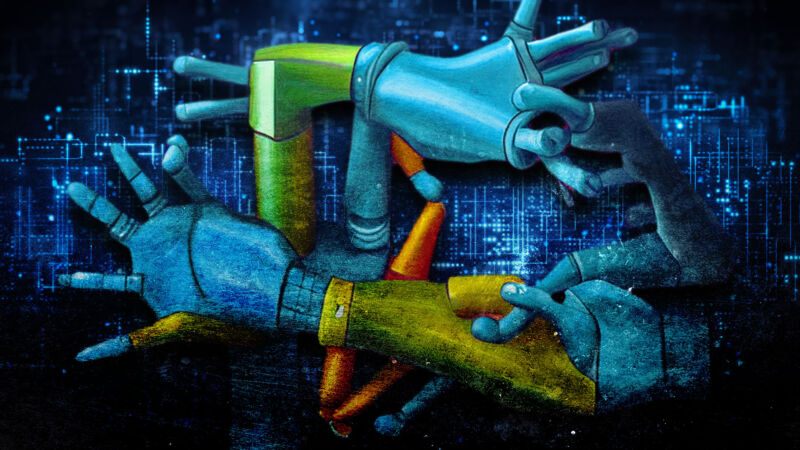The generative AI revolution has begun—how did we get here?

Enlarge / This image was partially AI-generated with the prompt "a pair of robot hands holding pencils drawing a pair of human hands, oil painting, colorful," inspired by the classic M.C. Escher drawing. Watching AI mangle drawing hands helps us feel superior to the machines... for now. —Aurich (credit: Aurich Lawson | Stable Diffusion)
Progress in AI systems often feels cyclical. Every few years, computers can suddenly do something they’ve never been able to do before. “Behold!” the AI true believers proclaim, “the age of artificial general intelligence is at hand!” “Nonsense!” the skeptics say. “Remember self-driving cars?”
The truth usually lies somewhere in between.
We’re in another cycle, this time with generative AI. Media headlines are dominated by news about AI art, but there’s also unprecedented progress in many widely disparate fields. Everything from videos to biology, programming, writing, translation, and more is seeing AI progress at the same incredible pace.
Read 68 remaining paragraphs | Comments
from Tech – Ars Technica https://ift.tt/NATFqGW
Comments
Post a Comment